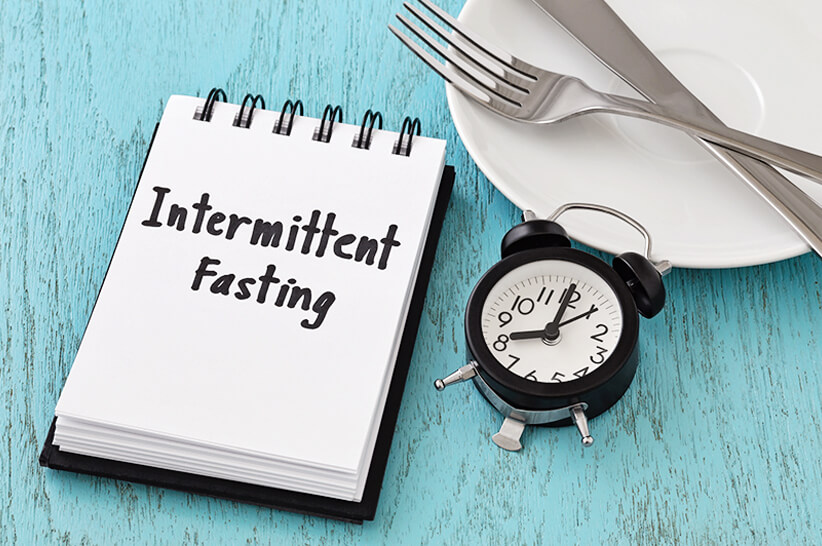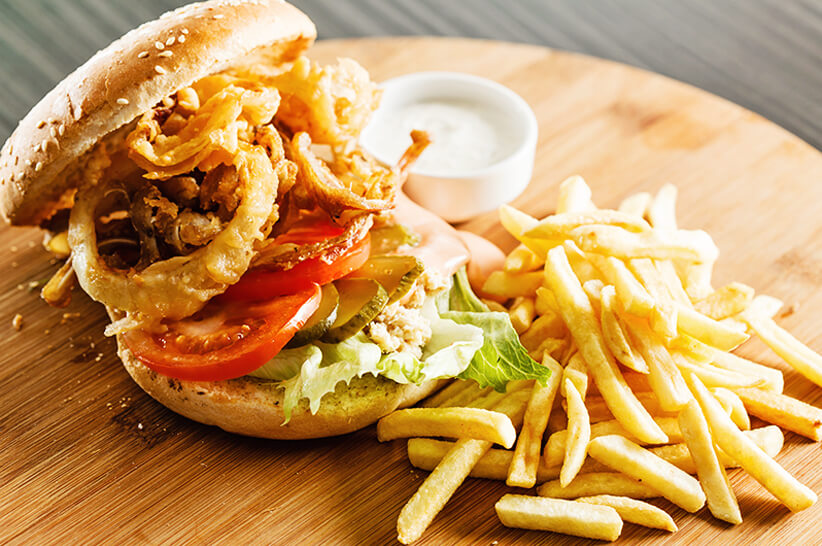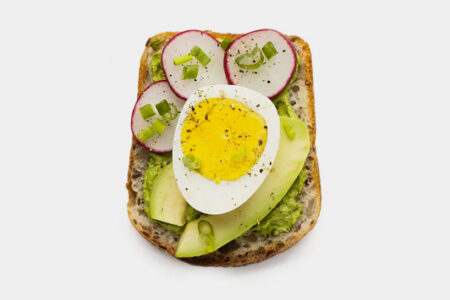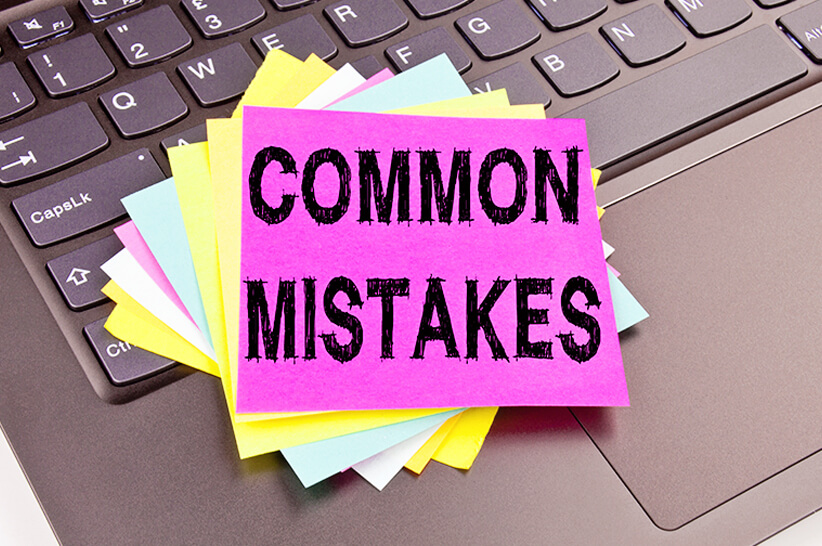The ketogenic diet is a low carb diet that emphasizes on getting at least 60-75% of your daily macros from healthy fats. Yet, some people on the keto diet are scared of eating fats. Keep reading to learn about some of the most common keto mistakes and how to handle them.
Why People Fail on the Keto Diet
If you’re just getting started on the keto diet, knowing why other people fail can help prepare you on what to expect and what mistakes to avoid. For example, some people end up eating too many calories and unintentionally eating too many carbs, both of which can sabotage weight loss on keto. Meanwhile, some people lose weight at a slower rate than expected because they set unrealistic weight loss goals.
Many of the keto mistakes can be blamed on a lack of adequate research before going keto.
16 Common Mistakes You Are Making on a Keto Diet
1. Seeing it as a quick fix
Mistake: A lot of keto beginners make the mistake of seeing the ketogenic diet as a quick fix for weight loss. They see a bunch of before and after photos on Reddit or YouTube and assume they can get the same results within just a few weeks.
What you don’t see behind these photos are the tremendous struggles and the determination and effort those people put in to get results.
Keto is a lifestyle, not a quick fix. Yes, it’s possible to lose weight fairly quickly on the keto diet, but it’s not a one-size-fits-all approach. In order to understand when and how much weight you might lose, a lot of factors need to be taken into consideration.
What to do instead:
- Set realistic goals.
- Analyze your goals. Is weight loss the only thing you want to achieve with the ketogenic diet, or are you seeking other health benefits as well?
- Consider your current health. Do you have any health conditions that might interfere with weight loss? Many conditions can affect weight loss in one way or another, such as PCOS and hypothyroidism, and although the keto diet can help to better manage these disorders, it may be impractical to expect to lose weight at the same pace as someone without your condition(s).
Many of the keto mistakes can be blamed on a lack of adequate research before going keto.
2. Impractical calorie restriction
Mistake: Some people attempt to cut their calorie intake to extreme lows in hopes of losing weight faster. Can it work for weight loss? Yes. Is it practical or safe? No.
In the early days of starting the diet, your chances of experiencing “keto flu” and carb withdrawal symptoms are much higher. You may feel tired, weak, and even dizzy occasionally. The last thing you want to do is to start your diet with an extreme calorie restriction to worsen your symptoms, likely causing you to quit keto faster than your started.
On the side of practicality, extreme calorie restriction can also increase your chances of developing some type of nutritional deficiency.
What to do instead:
- Use a keto calculator to figure out how many calories you should be consuming per day, and how to divide your macros. This should take away your fear of overindulging and help you to lose weight in a healthy manner.
3. Stressing about the scale
Mistake: A lot of people who start the ketogenic diet assume that weight loss will be a gradual journey where you constantly lose weight. That’s not entirely true of both keto and any weight loss method. In fact, it’s completely normal for weight loss to fluctuate throughout your journey, and to be completely honest, it’s what you should expect.

Even when you’re not trying to lose weight, you’ve probably overindulged a bit on special days or when out with friends. You’re certainly not alone – researchers have concluded that people tend to put on some weight during the weekends and lose it during the weekdays.
One 2014 study recorded the daily weight of 80 adults to see if any weight loss/gain patterns appeared throughout the week. They concluded that the participants’ weight fluctuated throughout the week – increasing during the weekend and decreasing from Tuesday on 1.
These researchers also suggested that weight fluctuations between weekends and weekdays should not be considered as true weight gain.
What to do instead:
- Don’t beat yourself over weight fluctuations – they’re normal!
- Remember that you’re on the right path as long as you’re following the diet correctly.
- If you have any health conditions, recognize that they can also affect the number on the scale.
4. Confusing water loss with fat loss
Mistake: Continuing with the scale theme, a lot of people confuse water loss with fat loss in the early days of keto. You’ll lose some “water weight” quite rapidly when you start making lifestyle changes.
Most people also tend to lose this water weight faster compared to actual fat loss, so remember this when you hear people claim that they lost 10 pounds or more in a single week.
What to do instead:
- Expect to lose water weight first.
- Don’t be surprised when water weight loss occurs quickly.
- After you have rapidly shed some water weight, don’t get frustrated when your weight loss slows down. This is normal, and you’re still on the right path.
5. Dehydration
Mistake: Neglecting to drink enough water is another common mistake made on the ketogenic diet. Although it might not sound like a big deal, even minor levels of dehydration can cause symptoms such as headache, dizziness, and fatigue 2. Combine those problems with keto flu symptoms, and you can expect to feel pretty lousy on keto.
What to do instead:
- If you know you’re bad about drinking enough fluids, track your daily water consumption using whatever method works best for you. There are plenty of hydration apps out there, or if you’re more simplistic, you can simply use the notes feature of your phone or (old school!) a paper notepad. Note how much water you drank, and the time you drank it.
- This may not be possible every single day, but it’s a good habit to adopt to make sure you’re hydrated enough.
- So, when and how much should you drink? It’s simple. Drink when you’re thirsty, and drink as much as you feel like you need at that moment. You don’t have to force yourself to drink some arbitrary amount of water each day.
6. Neglecting electrolytes
Mistake: By now, you’ve probably heard quite a few things about keto flu. Its symptoms typically occur as a result of carb withdrawal and electrolyte loss associated with it. Many people start the ketogenic diet without being aware that it tends to have a diuretic effect, which in turn means you’ll lose a lot of electrolytes (most notably sodium, potassium, and magnesium) via urine and sweat.

These electrolytes play crucial roles in your health. Potassium, for instance, plays a vital role in regulating fluid balance, muscle contractions, and nerve signals 3.
Since electrolytes are so vital to our bodily functions, a lot of people starting the ketogenic diet complain of having flu-like symptoms in the early days. They weren’t aware of the loss of electrolytes and how they can impact your health.
Another reason you may experience symptoms is due to the sudden withdrawal of carbs. If you’ve been eating a high-carb diet, you’ll likely experience some symptoms when you suddenly lower your carb intake to 20 grams or less per day. That’s normal, and you’ll need to be patient with your body while it adapts.
Keto flu symptoms can be avoided and treated by replenishing your electrolytes.
What to do instead:
- Replenish your electrolytes regularly. Although this may sound like a medical problem, don’t check yourself into the nearest emergency room and get yourself hooked up to an IV! The body is quite skilled at maintaining the equilibrium of your electrolytes when they veer in one direction or another, so all you need to do is provide it with the right (keto-friendly!) nutrients. Avocados are rich in potassium, and sipping salt water occasionally can help to replenish sodium. If the idea of salt water doesn’t appeal to you, bone broth and pickles are also great low-carb sources of sodium.
- If you’re comfortable adding a supplement to your regimen, try a low-dose magnesium supplement from a reputable brand. Of course, it’s always a good rule of thumb to check with your doctor first.
- If you’re still in the information-gathering stage and you haven’t started the keto diet yet, consider lowering your carb intake gradually to make the transition easier on you. First, try removing high-carb processed foods from your diet, and replace them with more nutrient-dense carbs such as fruits, vegetables, and whole grains. Aim for 100 or 50 grams of carbs per day for a week, and then gradually lower it to 20 grams or less until you’re ready to jump into keto at full speed!
7. Skimping on sleep
Mistake: Voluntarily going to bed far too late every night and not getting enough sleep.
“Voluntarily” is the key word here (we know many people suffer from sleep problems such as insomnia). If you’re one of them, perhaps now is the time to seek treatment if you haven’t already.
Sleep plays a crucial role in your immune function, metabolism, memory, and other vital functions, and there’s even growing evidence that getting adequate sleep every day can enhance longevity 4.
Conversely, a lack of sleep can cause symptoms such as fatigue, mood swings, forgetfulness, and lack of focus. It has also been associated with increased risk of developing obesity, heart disease, and diabetes, and it can even decrease your life expectancy.
So, if you’re voluntarily sleeping late because of social media, Netflix, or something else that can wait until the morning, it may be time to make some changes. Getting an adequate amount of sleep every night can make it much easier to follow the ketogenic diet.
Not convinced yet?
A 2010 study found that not getting enough sleep can lower the effectiveness of dietary changes when trying to lose weight 5.
What to do instead:
- Try tracking your sleeping patterns for a week to analyze what causes you to skimp on shut-eye. Focus on eliminating the causes, one at a time. If it’s social media or spending too much time on your phone, perhaps you might have to do something to make it harder to get your phone after bedtime. Perhaps you can put it on airplane mode and ask someone you trust to hide it away until morning, or you could invest in a small mobile phone “jail” or electronic safe to lock your phone away until morning.
8. Fatphobia
Mistake: Even though most people starting the ketogenic diet are aware it’s a high-fat diet, some are still hesitant to eat adequate fat to sustain ketosis.
We don’t blame you – it’s a common fear. Most of us grew up believing that a low-fat diet is necessary for overall health benefits and to avoid putting on weight. While low-fat diets do work for some people, the ketogenic diet has proven that weight loss and improved health can come from a high-fat diet as well.
You’ll only put on weight if you consume a high fat-diet in a free-eating situation where you’re also eating high-carb foods.
There’s no need to be scared about eating more fat than you’re used to when you start the keto diet. Not eating enough fat on keto can also increase your appetite and the temptations to “cheat”. Make sure you’re choosing nutritious fat sources such as avocado, grass-fed butter, and coconut oil.
What to do instead:
- Accept that you’re not committing a diet sin by eating more fat on the keto diet.
- Experiment with keto fat bombs if you find it harder to eat enough fat.
- Rather than obsessing over getting enough fat, focus on keeping carbs low instead.
9. Overdoing it on MCT oil
Mistake: MCT oil is a supplement containing medium chain triglycerides (typically extracted from coconuts). Pure MCT oil usually contains capric acid, caprylic acid, or a combination of both, and these components have been linked to many health benefits, including weight loss.
However, many blogs and articles tend to only talk about the wonderful health benefits of MCT oil and fail to mention that taking too much could result in side effects.
Some side effects of MCT oil include diarrhea, vomiting, gas, bloating, and nausea. In some cases, it can even contribute to fat accumulation in the liver.
1-2 tablespoons of MCT oil per day seems to be a safe yet effective dosage.
For instance, in a 2017 mouse study, subjects receiving 100% MCT oil experienced improved insulin sensitivity and reduced adiposity after 12 weeks compared to those receiving lard, placebo, and 25% or 75% MCT oil. However, the mice in the 100% MCT oil group experienced higher amounts of fat accumulation in the liver and altered lipid metabolism 6.
The ideal daily dosage of MCT oil is still unclear, however, 1-2 tablespoons per day seems to be a safe yet effective dosage.
What to do instead:
- Start with a lower dosage to avoid side effects – 1 or 2 tsp per day is a good place to start.
- After about a week, feel free to gradually increase your daily dosage.
- Avoid going above 2 tbsp per day.
10. Doing intermittent fasting the wrong way
Mistake: Intermittent fasting (IF) has proven health benefits, making it popular in the keto community. There are several different types of intermittent fasting and three of the most popular ones are:
- 16:8– This is when you fast for 16 hours and eat your daily calories during the 8 hours time frame. It’s quite easy to accomplish this if you skip breakfast after waking up and eat lunch.
- 12:12– This is when you fast for 12 hours and eat during the remaining 12-hour timeframe.
- 5:2– This is a slightly different form of intermittent fasting. Rather than restricting your food intake to certain hours of the day, you eat “normally” (in moderation, of course) 5 days a week and cut your calorie intake in half on the remaining 2 days .

Some people make the mistake of going for more extreme versions of intermittent fasting (such as 20:4 or One Meal A Day) when they’re just starting out on the keto diet. This can backfire and cause:
- Fatigue
- Undereating
- Overeating
- Quitting the diet
What to do instead:
- Understand that you don’t have to follow intermittent fasting because everyone else is doing it.
- If you’re new to keto, focus on becoming fat-adapted first.
- When you feel like you’re ready to try IF, start with the 16:8 protocol first and see how your body responds to it. This form of intermittent fasting tends to be the safest in the long run.
- Consult with your doctor first if you have any medical conditions.
11. Not doing your research on artificial sweeteners
Mistake: Some artificial sweeteners can cause side effects such as bloating, gas, and diarrhea. Erythritol tops this list, and it’s the most popular sweetener used in keto dessert recipes.
What to do instead:
- Research the side effects of the sweeteners you’re considering.
- Avoid those that tend to cause side effects, especially if you have a sensitive stomach.
12. Opting for dirty/lazy keto
Mistake: Opting for lazy/dirty keto because it feels “practical” and easy in the long run. The idea behind this approach is that you can eat whatever you want as long as you stick with less than 20 carbs per day.
While you may still lose weight, you’re likely to miss out on the other health benefits if you choose to follow this approach. Neglecting to focus on the quality of your food just for the sake of hitting macro goals can sabotage your health by triggering inflammation.
We’re not saying you should never eat fast food – there is certainly room in Mcdonalds or KFC for a decent keto meal. We know life can get in the way, and sometimes your circumstances might not allow you to cook at home.
We also understand the need for occasional cheat days. They can help you to stay sane and motivated when you’re feeling a little deprived
But would we recommend you stick with the lazy/dirty keto in the long run because it’s easier? Absolutely not.
What to do instead:
- Get back to “regular” (clean?) keto whenever you can.
- If you’re finding that you opt for dirty/lazy keto options when your schedule gets busy, take charge and come up with a plan. Many keto dieters find that meal prepping can be helpful in this situation since it reduces the temptation to take the easy way out and grab whatever sounds good.
13. Too many cheat meals
Mistake: Taking advantage of occasional cheat days. Allowing “once a month” to become “once a week”. Too many cheat meals can kick you out of ketosis, and you’ll be right back where you started. What happens when you get kicked out of ketosis? You’ll probably feel like giving up.

What to do instead:
- Train your mind to see the bigger picture. Why did you start on keto in the first place?
- Did you start it to lose weight, improve your health, or both?
- Look at the progress you have made so far, and remind yourself that it would be terrible to ruin your hard work.
- Keep track of the days or situations where you’re most likely to have a cheat meal, and figure out how you can avoid doing so going forward.
- It’s OK to plan ahead for the occasional cheat meal. Stick to your plan, enjoy the meal, and get on with your keto life.
- If you’ve gone a bit too carb-heavy, 16:8 intermittent fasting can be helpful the day after a cheat meal to get back into ketosis.
14. Not watching your calories
Mistake: Some people make the mistake of eating too many calories on the ketogenic diet because they only count carbs.
For instance, a cup of shredded cheddar cheese contains roughly 455 calories but only 1.4 g carbs. Combining that with the calories from all other meals in a day can easily exceed your calorie goal and stall your weight loss.
Those who practice the dirty/lazy keto approach are more likely to fall into this trap.
What to do instead:
- Have a list of high-calorie foods stuck somewhere in your room, or keep a list on your phone or in a notebook.
- Familiarize yourself with the foods on your list so you will realize when you’re overeating those foods.
- If you’re on keto for weight loss, make sure to watch your calories closely, especially in the early days of your diet.
15. Comparing yourself to others
Mistake: So-and-so has lost over 20 pounds in under 2 months, yet your scale is moving at a tortoise pace. Comparing your progress with the results of other people is one of the biggest mistakes you can make on anydiet.
Comparison can cause you to become discouraged when you don’t see results as quickly, and you may eventually decide to quit.
What to do instead:
- Accept the fact that what caused you to put on weight may not be the same reason that someone else gained weight.
- Remember that losing weight is not as simple as changing your diet and exercising. Many other factors can contribute to weight loss speed, such as hormonal imbalances and eating disorders.
- Appreciate the fact that you’re already making an effort to lose weight and improve your health.
- If you find yourself struggling with comparison, avoid looking at too many “before and after” photos, and instead focus on the progress you have made already and your motivation for continuing in this lifestyle change.
16. Assuming that weight loss is the only benefit
Mistake: Weight loss is one of the most popular (if not the most popular) reasons people begin the ketogenic diet. However, some people assume that’s all keto can do for them, and focus only on the scale.
This is often due to a lack of research before starting the diet. Maybe they see someone posting before and after photos on Instagram, and they decide to begin keto the next day. Although their intentions are good, these individuals are typically the ones who fall behind in their progress, whose weight fluctuate frequently, or tend to be constantly going in and out of ketosis.
What to do instead:
- If you’re just getting started with the ketogenic diet, take a week or so to research and take notes on all the important things you need to know about it before jumping into it impulsively.
- Research all the benefits of the keto diet (not just weight loss) and see how they can help you.
- Focus on seeing keto as a lifestyle change instead of a quick-fix weight loss plan.
Conclusion
A lot of people make one or more of the keto mistakes we’ve discussed above. Knowing how to deal with each using the tips suggested can help you progress successfully on the keto diet. Knowledge is power when it comes to keto, especially when you’re just starting out.
Takeaways
- Starting the keto diet without doing proper research can cause you to make mistakes such as neglecting electrolytes until keto flu symptoms hit. Many people don’t even hear about keto flu until they start the diet. Had they taken the time to do some research beforehand, they could have avoided those symptoms entirely or recovered faster.
- There are many other mistakes that you can make on the keto diet. Stressing about the scale, eating too many calories, and not eating enough fat are some of the most common.
- We hope you have a better understanding of mistakes to avoid in your keto journey and that you can apply the tips provided to be successful on keto.










![Juicing for Weight Loss: Everything You Need to Know [Plus Recipes]](/wp-content/uploads/2019/08/Juicing-for-Weight-featured-image.jpg)










